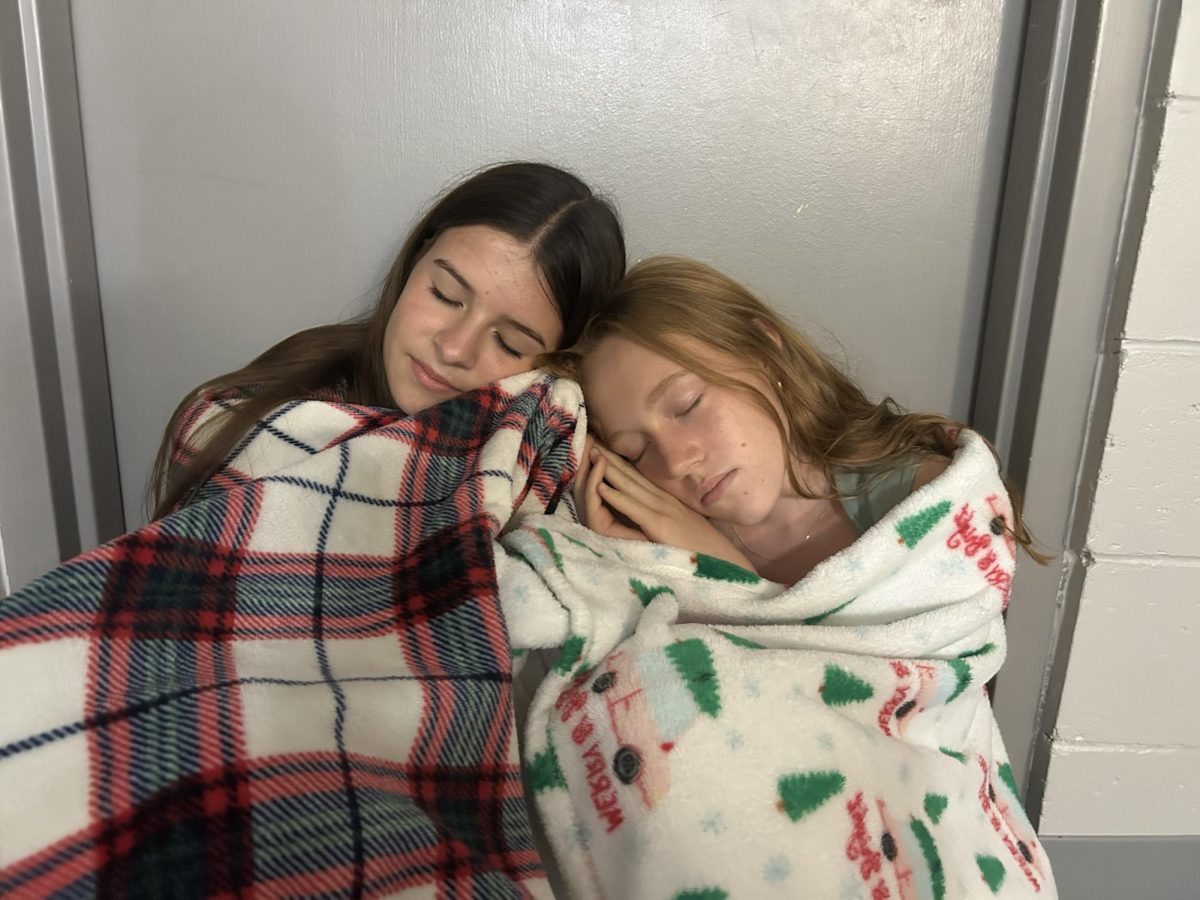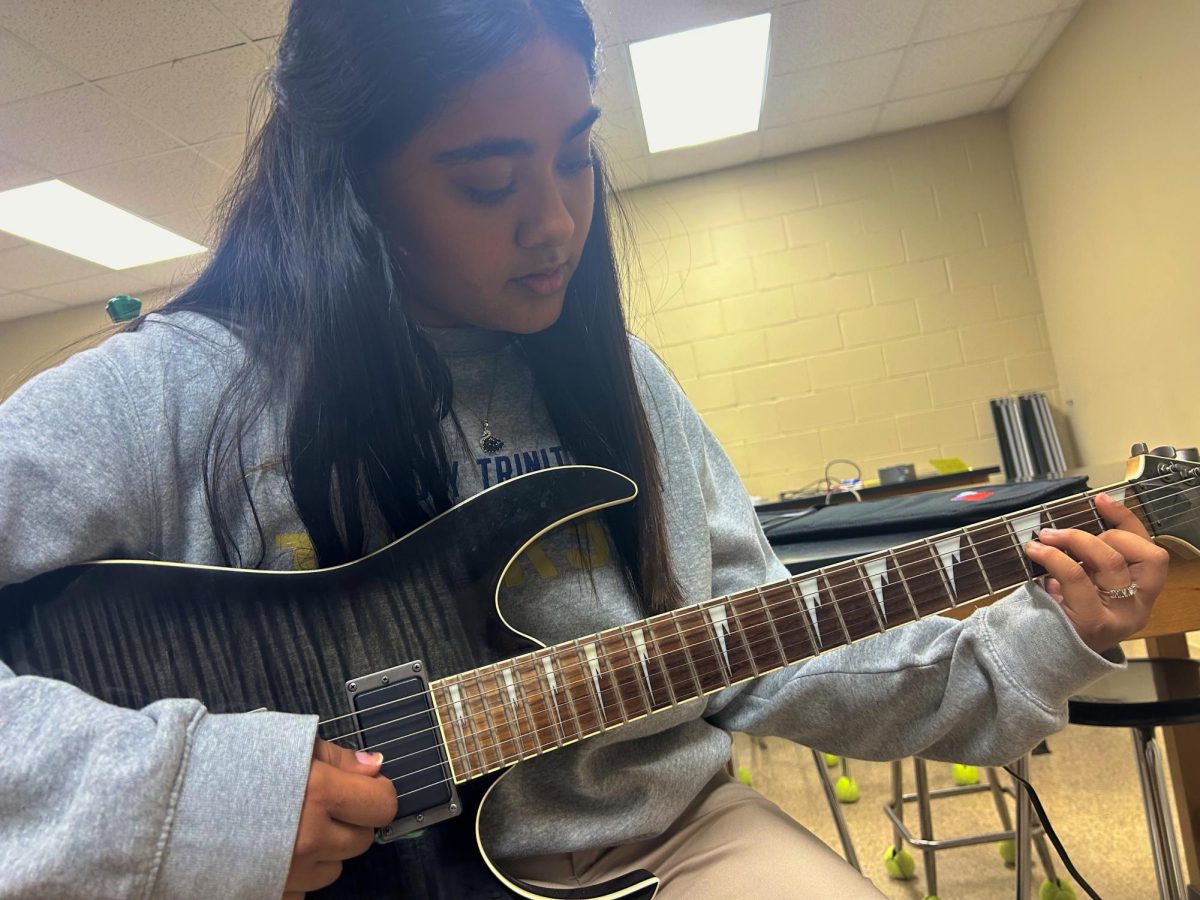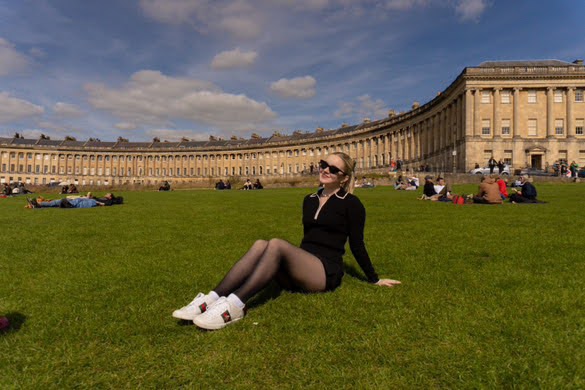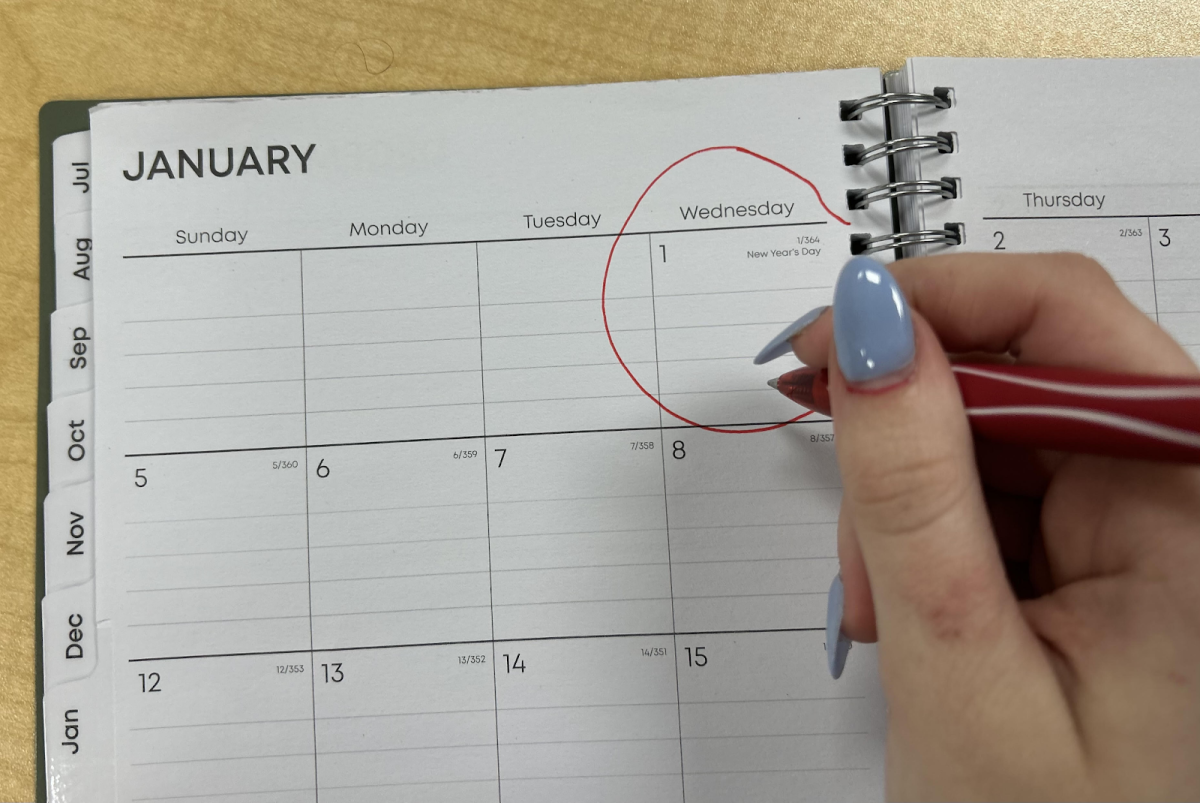Recently, Holy Trinity’s AP Psychology class took an innovative approach to launching their new unit on sleep by conducting a sleep study, where students were expected to try to sleep in the classroom.
“In education, a lot of times teachers will begin a unit with what we call a hook to try to peak student interest before we start introducing content,” teacher Lisa Dykes said. This particular experiment aimed to spark curiosity about sleep cycles, and circadian rhythm, but it also gave students the chance to reflect on what their challenges with sleep might be.
The classroom was turned into a nap-zone, with lights dimmed and a relaxing story playing in the background. Dykes notes that many students found themselves sleeping on tables, the floor, or in their chairs, often snoring while others simply lounged about. This playful setup prompted a wide range of experiences among the students.
“I was really excited going into it and I was really ready,” sophomore Emma Buchwald said “I ended up being disappointed because I was really trying to go to sleep but I just kept nodding off and waking up.” This reflects a common issue many students face—balancing a rigorous academic schedule with the necessity for sufficient rest. Contrastingly, sophomore Kilee Whyte shares, “I brought a blanket and I slept on a table which was surprisingly comfortable and I was able to sleep the entire class and woke up right before the bell rang.” As a student-athlete herself on the varsity girls volleyball team, Whyte’s ability to catch up on sleep displays how busy students often prioritize academic and athletic commitments over personal health.
The assorted results of the sleep study highlight the diverse needs and experiences of students. While some found the classroom environment challenging for sleep, others embraced it as a break from their hectic schedules. This variability invites deeper reflection about sleep hygiene, the importance of restorative rest, and how Holy Trinity can better support the health and well-being of its students.
The students’ general consensus of the experiment is that it served as an engaging introduction to the Sleep and Sensation unit, sparking curiosity while also providing insight into the realities of student life. Dykes reflects saying, “It is a weird environment to try to nap in, so I recommended a pillow or blanket to come in.” This hints at the need for comfort and a supportive environment for learning—both in terms of the physical environment and mental readiness. It opened the door for discussions about its significant impact on cognitive function, and mental health, on student academic performance. As students reflect on their experiences, they are prompted to consider how to prioritize their sleep in the future, integrating the lessons learned from the study into their everyday lives.







